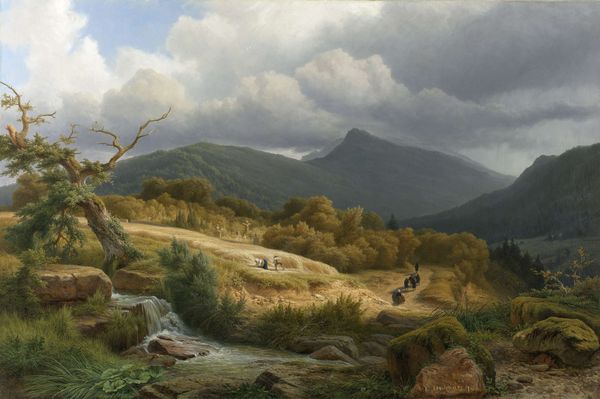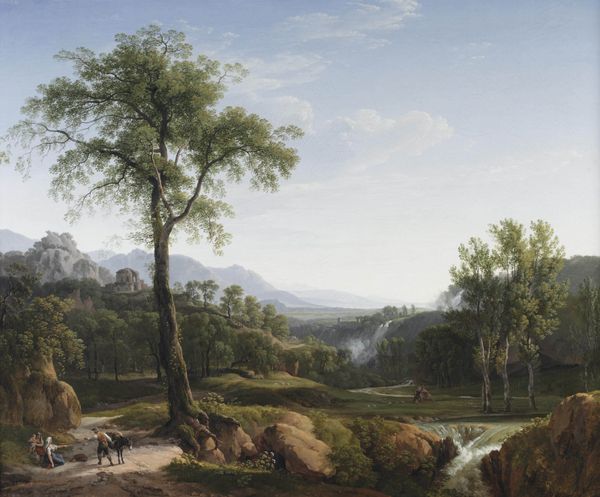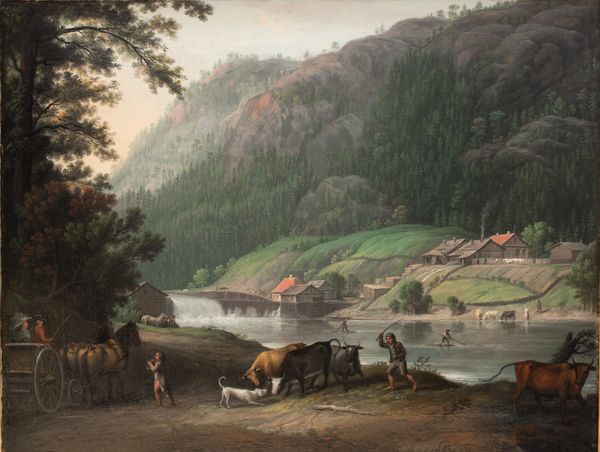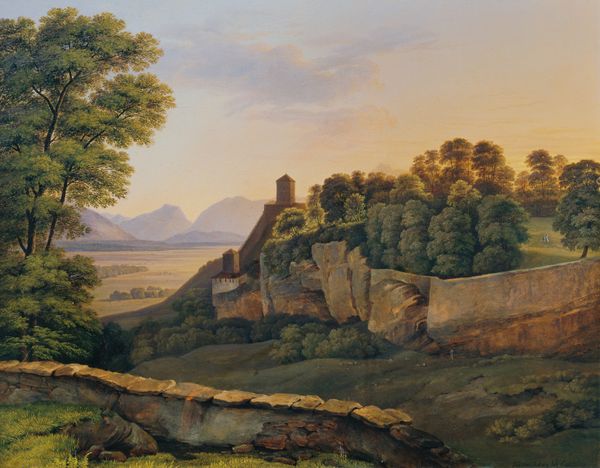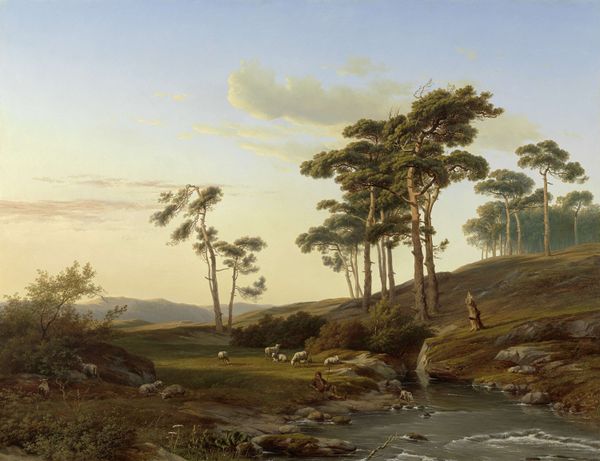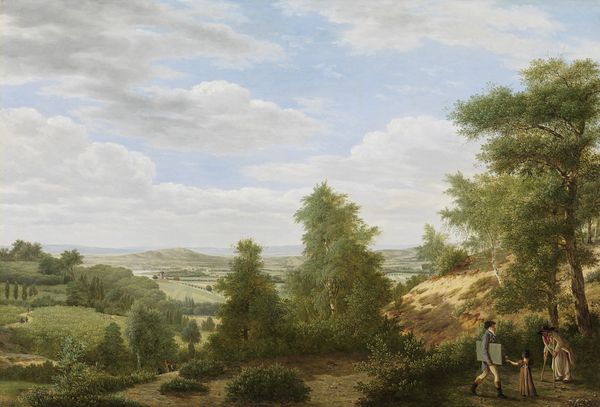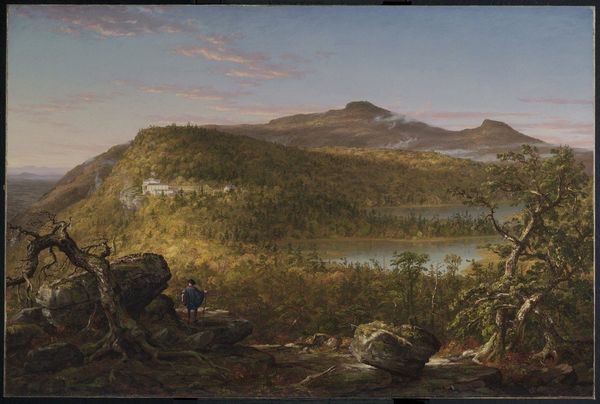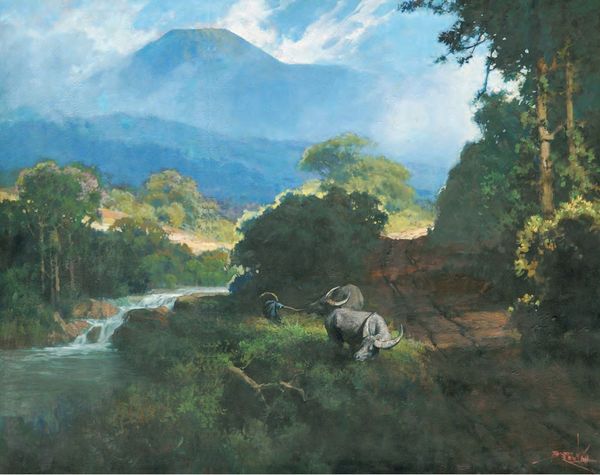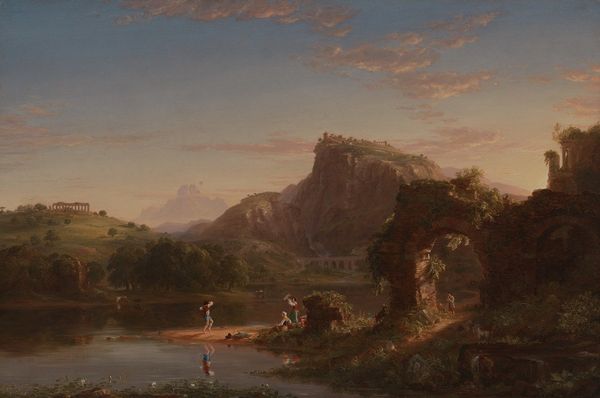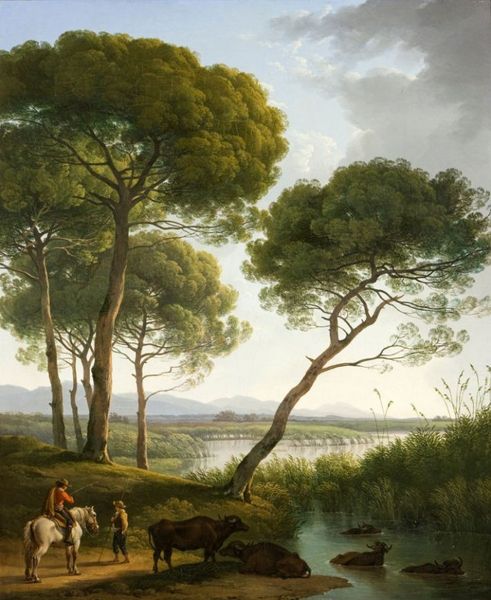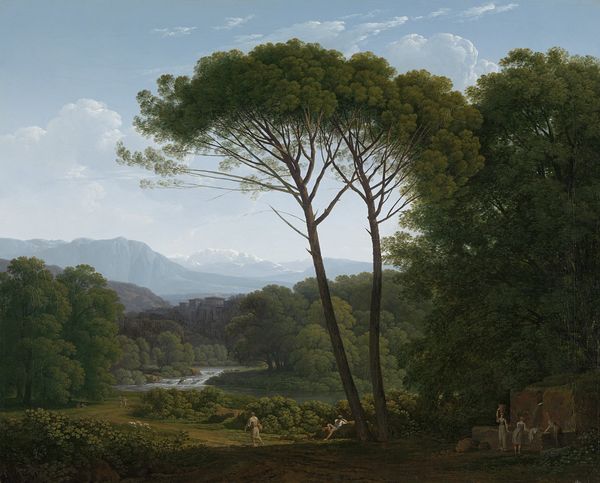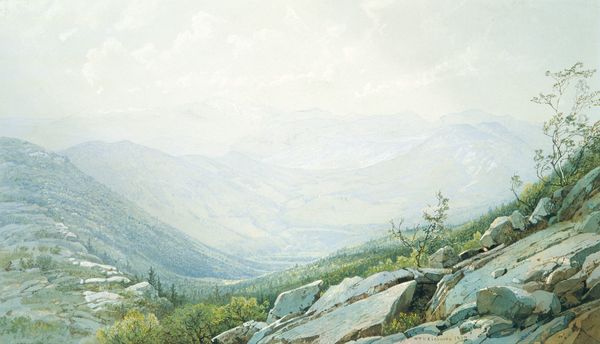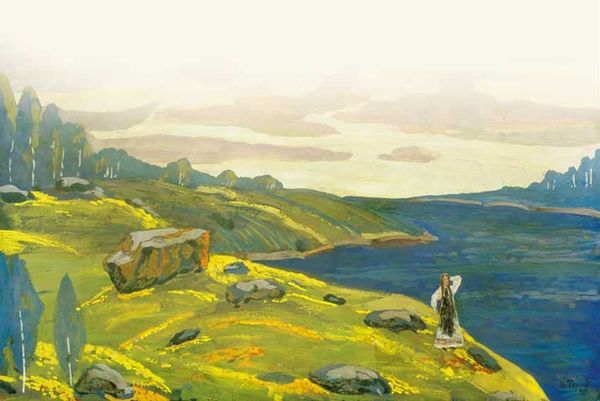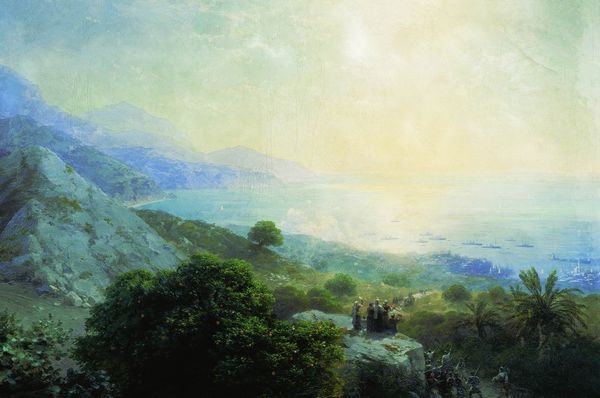
#
tree
#
grass
#
impressionist landscape
#
possibly oil pastel
#
nature
#
oil painting
#
acrylic on canvas
#
landscape photography
#
mountain
#
animal drawing portrait
#
surrealist
#
watercolor
#
digital portrait
Copyright: Public domain
Editor: So, here we have Johan Christian Dahl's "View of Lyse Abbey near Bergen," painted in 1826. It looks like a painting – possibly oil on canvas, given the style. It’s a picturesque landscape, but something about the woman sitting there, almost swallowed by the scenery… it gives it a slightly melancholy feel, don’t you think? What do you see in it? Curator: Melancholy is a wonderful word for it! For me, it evokes a quiet contemplation. Dahl masterfully uses light and shadow to create depth, drawing our eye through the landscape to that distant water. But the woman...she acts as a visual anchor, doesn’t she? Almost a figure of *rumination*. Editor: Rumination. I like that. Curator: Yes, but look closer. Does it strike you that Dahl might be doing more than just painting a pretty picture? There’s this feeling of the individual’s relationship to nature... Almost overpowered. Is this about the sublime, maybe a yearning? The Abbey is off in the distance... a ruin? What does *that* say, I wonder... Editor: That’s interesting! I hadn’t really considered the Abbey’s ruined state. Maybe it is about loss, or the passage of time, like nature reclaiming what was once human. Curator: Precisely! And what about the goats? Just pastoral fodder, or is there some more symbolic idea hidden amongst them? Sometimes art isn’t always in plain sight, but what lies in our interpretation. And does this work offer some kind of portal to how one *feels*? Editor: Wow. I initially saw a pretty landscape, but now I’m seeing layers of meaning. It's not just about the *what* but *why*, and also *how* it makes me feel. Curator: Exactly! The joy of art history isn’t just about identifying facts; it’s about building a dialogue. And those conversations, especially the internal ones, are what make it special.
Comments
No comments
Be the first to comment and join the conversation on the ultimate creative platform.
